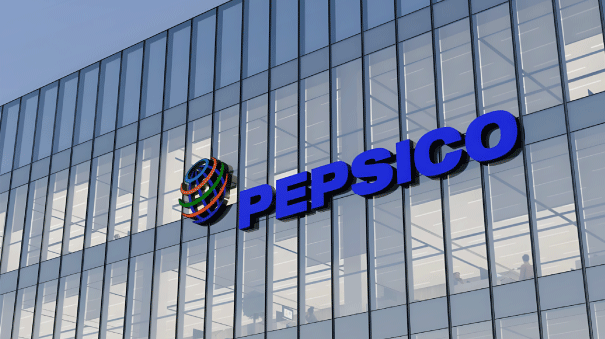Does your IT portfolio have printers? If yes, how do you manage them? With the rise of the digital age, many companies have shifted from using physical copies of documents to getting streamlined support from printers through tools integrations which provides the comprehensive view of the entire print infrastructure connected with your network. The problem with the physical copies was that you could not keep track of where your physical documents were, and you didn’t know who had access to them (both internally and externally).
Printer asset management enables you to manage printers and other hardware so you can keep track of who’s using them, what they’re printing, and where they’re printing it from also you can monitor the overall health of the printer, you can set alerts for any critical incident like low toner, paper jam, etc. These tool plays a vital role in reducing printer downtime and eventually increase overall productivity
Printer Asset Management
Print management software can offer a lot more than basic print management. Printer asset management is one of these extra benefits, which allows you to manage all aspects of your printer fleet and reduce your printing costs. For example, with printer management features built into printer fleet management software, you can schedule printers for maintenance when they’re not being used by monitoring their usage. This will ensure that every machine in your company is working at maximum efficiency at all times.
Another great benefit of printer asset management is reporting. To give an example, if you want to know how much money has been saved over time due to printer fleet management software and printer management features such as tracking usage, there’s no better way than having access to reports detailing it.
- The Printer asset management tool generates customised alerts based on event and occurrence thresholds, triggers, and vendor problem codes, allowing you to effectively manage your print environment. This increases device availability, decreases inventory, and boosts first-call success rates.
- It generates the reports which are required to improve the management of your print environments. You can use predefined templates or create customized reports to get the data you want. Schedule hourly, daily, weekly, or monthly reports to ensure you get what information you need on time.
- With a printer management tool, You can get meter readings, printer performance, and supply-level data from your multifunction printers. Billing will be easy because there will be a lot of information that can be seen, like how many pages were printed, how many supplies were used, and how much service was given.
- A printer asset management tool has a brand-agnostic feature that makes it easier for you to manage printers that come from different OEMs.
On the one hand, where organisations outsource a management program for printers, others rely on outsourcing printer manufacturers. No matter what you choose, here is the list of some vital areas to consider before choosing a printer asset management tool.
Ø Security of data
Ø Governance and vendor management
Ø Expertise in IT Will Be Crucial
Ø Central asset repository
Security of data
The usage of SNMP-data-based tools has evolved as a common practice to monitor printers. This technology promotes easy asset discovery, data collection, incident management, reporting, and other valuable services. However, certain challenges come along. Firstly, these tools are mostly designed and developed by printer manufacturers; as a result, they are not manufactured agnostic.
If your printer inventory is homogenous, these can be proven effective; otherwise, they are of no use. The second major challenge is related to the security of data. Several data collection tools are manufacturer agnostic, but they are deployed as part of the hosted architecture. The major problem which emerges is who has access to the data. These tools use printer manufacturers, dealers, or supply vendors. In order to avoid such cases, an on-premise deployment would be a recommended alternative.
Governance and vendor management
Once the security of data is discussed, it leads to another important topic: governance. The maturity of any organisation’s IT Asset Management program is mainly dependent on how it has been managed throughout. When it comes to printer cost management, governance is essentially important. Further, the cost is driven by two significant sources; vendors and end-users.
Vendors
Do you think your printer or the printer vendor provides exactly what they said?
Read the following questions to get an answer.
1- Does my existing governance model offer data points that help for easy validation of vendor invoices for accuracy?
2- Is there any way to monitor and report printer fleet health including KPI targets and contract SLAs?
3- Can we substantiate or validate vendor recommendations for any new device?
End-users
An effective governance program mostly has the adherence and development to a Group Printer Policy, which can easily align with policies, infrastructure, and IT security. A policy will be termed as an effective Printer Policy if end-users can only adhere to it.
Visit our website today to learn more about trends and technologies in printer management software, ensuring that your business is well-equipped to handle inventory and reduce costs.
Expertise in IT Will Be Crucial
The printer industry is growing with a new demand for printed products. As a result, the industry is experiencing a boom in orders, but there is also a shift from traditional printing and multimedia to digital printing.
The growth of the internet has led to a rise in demand for digital print, which has helped the technology evolve rapidly. Many businesses will prefer IT suppliers over traditional print suppliers by 2025. As such, IT channel partners must expand the expertise of their service offerings by partnering with experienced IT service providers or developing their capabilities. This would allow them to offer an overall managed security service.
Central asset repository
A secured and centralised asset repository is unarguably essential to manage the printer assets effectively. One major challenge that most organisations are currently experiencing is that they are not aware of various printer assets. A self-assessment or the baseline discovery using SNMP tools that offer asset repositories can address this challenge effectively.
Conclusion
There is so much to accomplish by easily implementing the Printer Asset Management program. Also, it’s a seamless blend with IT security standards, policies and objectives; there are several added benefits. If you’re thinking of implementing any of the suggestions mentioned above, it can lower costs and increase gains.

